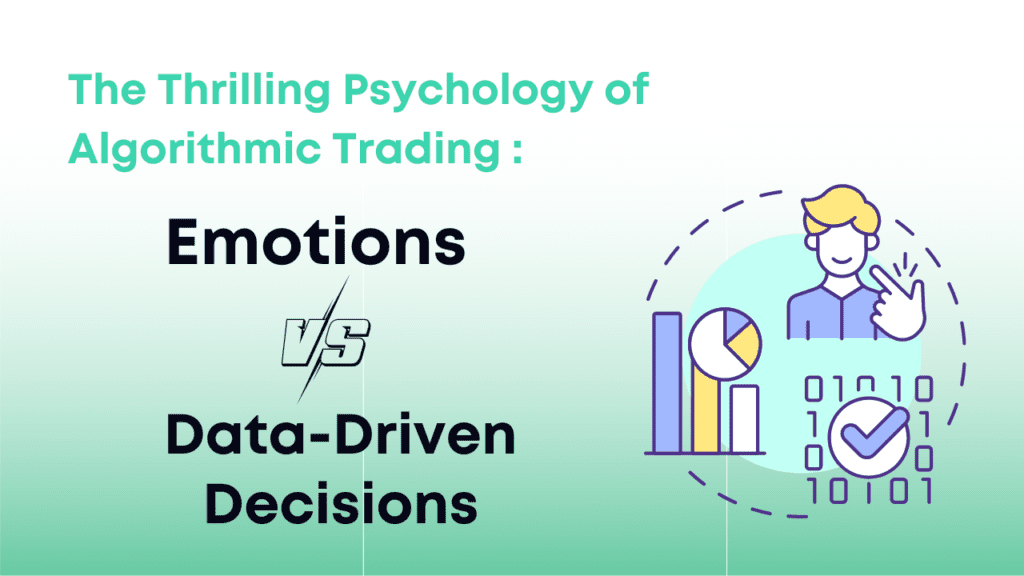The Thrilling Psychology of Algorithmic Trading: Emotions vs. Data-Driven Decisions

Introduction :
In the dynamic world of finance, where billions of dollars are at stake every minute, the battle between human emotions and data-driven decisions is ever-present. Nowhere is this struggle more pronounced than in the realm of algorithmic trading. This form of trading relies on computer algorithms to execute trades based on predefined criteria, with the aim of removing human emotion from the equation. But can machines truly outsmart human emotions, or are we merely witnessing a new chapter in the age-old saga of reason versus passion? Let’s delve into the thrilling psychology of algorithmic trading and explore the interplay between emotions and data-driven decisions.
The Role of Emotions :
Emotions are an integral part of human nature, but when it comes to trading, they can be both a trader’s greatest asset and their most formidable adversary. Fear, greed, and overconfidence often cloud judgment, leading to impulsive decisions that can result in significant losses. In algorithmic trading, emotions are entirely removed from the equation—or at least, they’re supposed to be. By automating the trading process, algorithms eliminate the emotional biases that plague human traders, allowing for more disciplined and rational decision-making.
The Rise of Data-Driven Decision-Making :
Algorithmic trading represents a paradigm shift in the way financial markets operate. By leveraging sophisticated algorithms and vast amounts of data, traders can execute trades at speeds and volumes that were once unimaginable. These algorithms can analyze market trends, identify patterns, and execute trades with precision and efficiency, all without succumbing to human emotions. The promise of algorithmic trading lies in its ability to remove the emotional biases that often plague human decision-making, allowing traders to make decisions based purely on data and statistical probabilities.
The Psychology Behind Algorithmic Trading :
Despite the allure of data-driven decision-making, the psychology of algorithmic trading is far from straightforward. While algorithms may be immune to human emotions, they are not immune to the biases inherent in the data they analyze or the strategies they employ. Moreover, the programmers who design these algorithms are themselves subject to cognitive biases and may inadvertently introduce biases into the algorithms they create. Additionally, the sheer complexity of financial markets means that algorithms may struggle to adapt to unforeseen circumstances or black swan events, leading to unexpected outcomes and potential losses.
Finding Balance :
In the tug-of-war between emotions and data-driven decisions, finding the right balance is key. While emotions can cloud judgment and lead to impulsive decisions, they also play a crucial role in risk assessment and intuition. Similarly, while algorithms excel at processing vast amounts of data and executing trades with speed and precision, they lack the human touch and may overlook qualitative factors that can impact market dynamics. Ultimately, the most successful traders are those who combine the best of both worlds, leveraging data-driven insights while remaining mindful of the role that emotions play in shaping market behavior.
Conclusion :
The psychology of algorithmic trading is a fascinating intersection of human emotions and data-driven decision-making. While algorithms offer the promise of removing emotion from the equation, the reality is far more nuanced. Emotions remain a powerful force in financial markets, driving investor behavior and influencing market dynamics. At the same time, data-driven decision-making has the potential to revolutionize the way we trade, offering unparalleled speed, efficiency, and precision. By understanding the interplay between emotions and data-driven decisions, traders can navigate the complexities of financial markets with greater insight and confidence, ultimately achieving their investment goals.